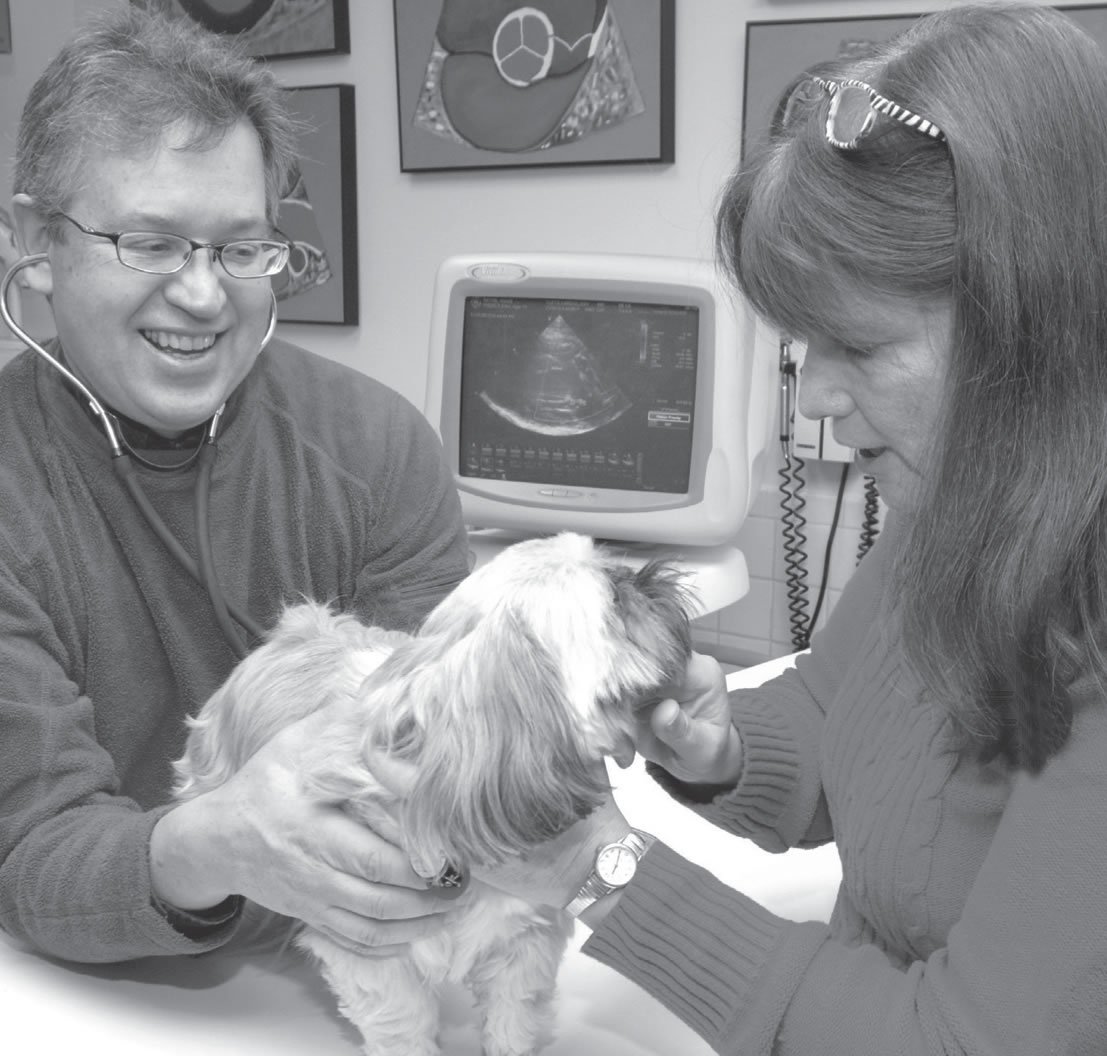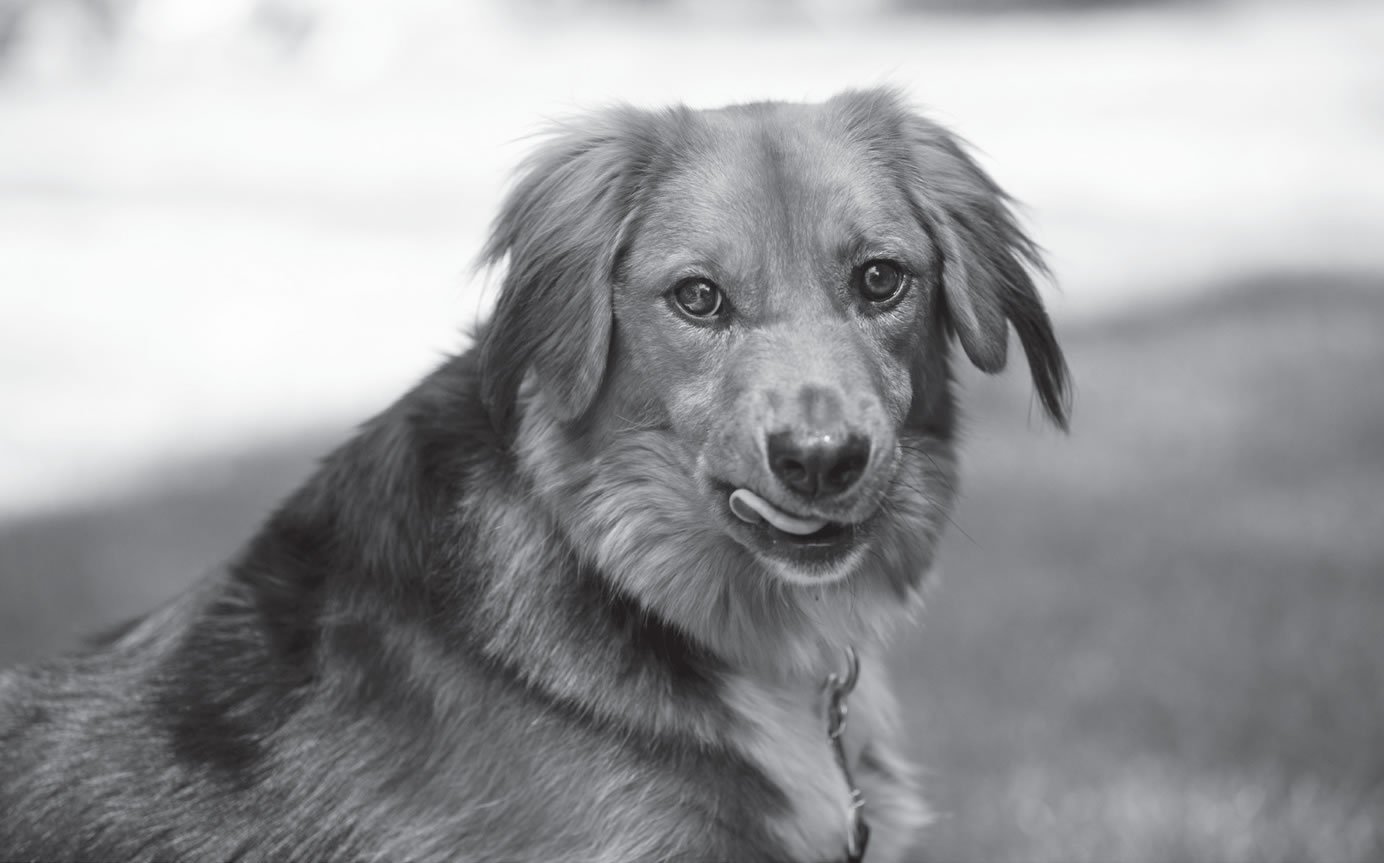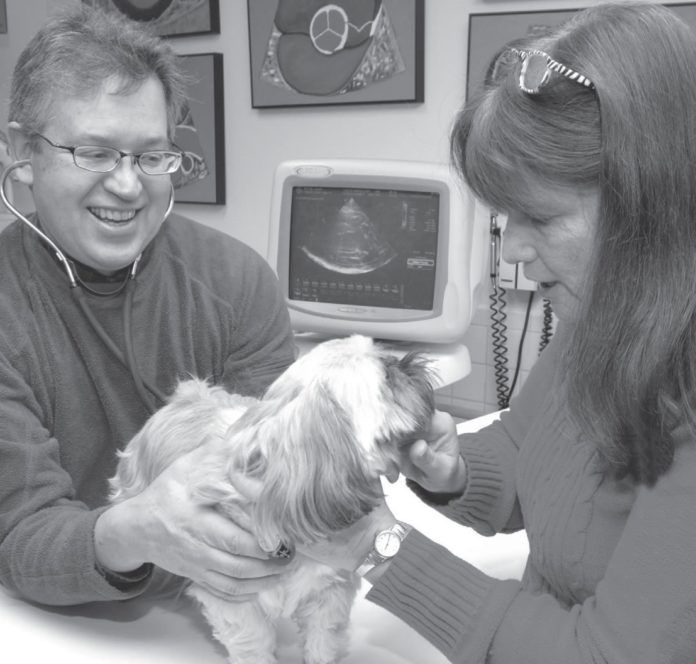
Think “shunt,” and perhaps a medical solution comes to mind, as in a shunt implanted in the brain that allows fluid to drain and thereby decrease swelling in that organ. A cardiac bypass is a shunt, too. It’s a new route for blood to flow from one part of the body to another when the old route is blocked and needs to be gotten around. In medical terms, a shunt is simply a passageway that allows the movement of fluid from one part of the body to another.
But shunts are not only medical solutions. Sometimes they are congenital abnormalities, that is, birth defects. A person — or dog — is born with a passageway, or blood vessel, that sends blood in the wrong direction and must be fixed.
In dogs, there are two kinds of bad shunts — birth defects — that veterinarians come across most often. One type occurs either just outside the heart and the other, just outside, or right inside, the liver. Neither is terribly common, but they occur often enough that the veterinary community has become better at fixing them.
Patent Ductus Arteriosus.
The anatomy. As you probably remember from high school biology, the main blood vessel that leads away from the heart to carry oxygenated blood toward all the body tissues is the aorta. Once the blood has dropped off oxygen to all the cells, it returns to the heart, and the blood vessel that then brings it over to the lungs from the heart so it can receive more oxygen for another go-round is the main pulmonary artery.
During fetal life, there’s no need for blood to go to the lungs for more oxygen. That’s because the puppy (or human fetus) isn’t breathing; it’s surrounded by fluid with no use of the lungs. Instead, it gets its oxygen via its mother’s breathing. When the pregnant mother breathes in oxygen, some of her oxygenated blood goes through the umbilical cord to the growing dog. After the unborn pup gets the oxygen he needs, his blood returns to his heart, as usual, but instead of going from the main pulmonary artery there to the lungs, it flows directly back into his aorta through a short, fat little blood vessel — “a stubby thing,” as Tufts veterinary surgeon John Berg, DVM, puts it — called the ductus arteriosus.
Once the puppy is born, however, he starts breathing on his own, and his lungs enter the loop of where his blood travels. That is, blood no longer makes the short trip straight from his main pulmonary artery to his aorta via the ductus arteriosus but from the pulmonary artery over to his lungs and then back to his heart and into his aorta. The ductus arteriosus closes up at birth. Unless something goes wrong.
The shunt. In some cases, the ductus arteriosus doesn’t close at birth. Doctors call this a patent ductus arteriosus (PDA), “patent” meaning “affording free passage,” and the continued operation of this shunt once the dog is outside his mother’s body and breathing on his own causes problems. What happens is that now things work in reverse. Blood flows backwards from the aorta through the duct and into the main pulmonary artery. The reason is that blood pressure is much higher on the aortic side after birth, pushing blood in the opposite direction.
Not all of the newborn puppy’s blood does this. But enough of it goes through the ductus arteriosus to cause health problems. Consider that the lungs are getting blood from the main pulmonary artery, like they are supposed to, but also receiving blood that has flowed backwards from the aorta into the main pulmonary artery. That extra pressure on the lungs from blood coming in from two separate sources causes the lung’s walls to thicken inward. That, in turn, causes the lungs’ blood vessels to narrow, making it harder for the heart to pump blood into them. Eventually, that can lead to heart failure — fluid build-up around the lungs that makes it difficult to breathe.

Diagnosis. Fortunately, soon after birth, a PDA is usually detected by a puppy’s veterinarian in the course of the frequent examinations that come with vaccinations and booster shots. With a stethoscope, the vet can hear the effect of the shunt in a loud, telltale murmur that practicing clinicians refer to as a machinery shop murmur because it sounds somewhat like the rhythmic cycling of machinery in a factory. The murmur signifies that blood is going in the wrong direction, creating turbulence — “like water coming out through a garden hose at a weird angle,” says Dr. Berg. Sometimes, if the murmur is severe enough, it can be felt on the side of the chest as well as heard through a stethoscope. “It’s a lot of high-pressure blood going through this abnormal channel,” Dr. Berg explains.
If left untreated, the signs of heart failure that would eventually ensue include weakness, breathing difficulty, poor growth, and perhaps a cough. Fortunately, the murmur signals to the veterinarian that the shunt needs to be closed before there’s fluid build-up in the lungs that causes these complications.
The fix. Dog owners should not put off repairing a PDA. If you wait, the pressure in the lungs can become so high that it exceeds the pressure in the heart so that blood starts flowing from the lungs back into the main pulmonary artery and then over to the aorta. And once the flow reverses direction, the problem becomes untreatable. Close, or ligate, the passageway at that point, and too much blood will back up from the lungs into the heart and the rest of the body, killing the dog.
There are two ways to close the shunt when the murmur is detected.
1. Surgery. An incision is made between the ribs on the left side of the chest. “From there,” says Dr. Berg, “we go in and put a ligature, or suture, around the blood vessel and then tie the suture, which collapses the vessel and stops blood from flowing through it. This procedure works very well,” he reports, “but entails major surgery because of the big incision into the chest. There is also a small risk of life-threatening bleeding. It’s a low risk, but not a zero risk.” That’s why at Tufts, “we hardly do this surgery any more,” Dr. Berg comments.
2. The vast majority of dogs at Tufts diagnosed with a patent ductus arteriosus now have the problem fixed with interventional radiography. Instead of putting a suture around the outside of the blood vessel, the veterinarian will “implant a little metal coil right inside the ductus itself,” Dr. Berg says. He does it with the help of an x-ray movie — x-rays in real-time, if you will. That’s the interventional radiography part. This way, the vet can see inside the duct as he’s working.
What happens specifically is that the doctor passes a long catheter through a small incision made in the dog’s leg rather than a large incision in the chest, so there’s no risk of catastrophic bleeding. He then positions the tip of the catheter right inside the shunt and when he sees on the screen that it’s properly placed, he deploys the coil from the catheter tip, and it causes a blood clot to form; the blood stops flowing. “Sometimes one coil is enough,” Dr. Berg says. “Sometimes it takes two or three.” The way the doctor knows is by injecting a little dye into the shunt after the deployment of each coil to see if there’s still blood flow. “He’ll keep implanting coils until the blood flow stops,” Dr. Berg says.
“The outcome is good with either procedure, the surgery or the interventional radiology,” he points out. “But the advantages of the interventional radiography method are great enough that we almost never do the chest surgery anymore.”
Prognosis. Once the shunt is closed off, the dog is completely normal and lives a normal life with normal life expectancy. The problem is solved.
Portosystemic Shunt
The anatomy. One of the main functions of the liver is to clear toxins from the blood coming in from the intestines. The blood travels to the liver through the portal vein, then, once the toxins are filtered from it, to the rest of the body. Unless something goes wrong.
The shunt. Some dogs are born with a large blood vessel that goes straight from the portal vein to the vena cava, the main blood vessel that takes blood back to the heart after it has been through the rest of the body. That means not all the blood passes through the liver, and toxins build up because the blood is not being adequately cleaned. The shunt in this case is called a portosystemic shunt.
Diagnosis. Unfortunately, a portosystemic shunt is not typically an incidental finding made very early in the pup’s life by a listen with the stethoscope, before damage has been done. There is turbulence, but it is too quiet to be heard. Clinical signs must be present to cause suspicion of these shunts and lead a veterinarian to make the diagnosis. The shunts are usually found in older puppies and sometimes in dogs as mature as one to two years of age. The signs include a variety of problems such as weakness and also issues relating to the brain because of the presence of neurotoxins in the bloodstream. An affected dog might experience seizures and also abnormal behaviors like walking in circles. Vague, non-specific signs like poor growth and low activity levels can occur, too.
Ultrasound will confirm the diagnosis and also tell exactly where the shunt is. It can be extra-hepatic — inside the abdomen but outside the liver — or intra-hepatic, meaning within the liver’s interior.
The fix. “If the shunt is outside the liver, we treat it with conventional surgery,” Says Dr. Berg. “We find the blood vessel and put a little ring around it called an ameroid ring. It’s doughnut-shaped and made of a clay-like material that’s surrounded by metal. That material — ameroid — absorbs water, and as it does the clay expands so that the hole in the doughnut fills up. The clay expands only inward because the metal on the outside prevents outward expansion. The inward expansion causes the vessel to collapse.”
The intra-hepatic type of portosystemic shunt can also potentially be treated surgically, but shunts within the liver are harder to see and work with because they are hidden from the naked eye. That’s why, Dr. Berg says, these shunts are now commonly treated with interventional radiography, like most PDAs. In a very similar procedure, the veterinarian introduces a catheter through a small incision in the leg, then positions it inside the shunt within the liver with the help of the x-rays. From there he deploys the metal coils, which “sort of expand out and press themselves against the wall of the vessel,” Dr. Berg says. “Their sitting there causes a clot to form.
“The gain in treating an intra-hepatic shunt with interventional radiography is even greater than for treating shunts around the heart,” Dr. Berg says. “In the past, a PDA could always be treated surgically, even with the slight risk of bleeding in the chest cavity. But dogs with intra-hepatic shunts were not always surgery candidates because a surgeon couldn’t always locate them. “You couldn’t necessarily see the shunting vessel,” notes Dr. Berg. “The liver is opaque, like a big block of cheese. Finding the shunt could create a lot of bleeding, and in some cases we couldn’t find it at all.”
Prognosis. Unlike a dog with a corrected PDA, a dog whose portosystemic shunt has been closed off may need ongoing medical management. That’s because even though the shunt has been successfully treated, “the dog may still have small vascular abnormalities within his liver that continue to cause some blood to shunt at the microvascular level,” Dr. Berg notes. In those cases, the dog will need medications throughout life that reduce the formation of toxins. A special, low-protein diet may be prescribed, too. Many toxins that the liver filters from the blood come from the breakdown of protein within the intestines; if you decrease the protein load, you get a lower toxin production.
With these aspects of medical management in place, a dog whose problem is not completely solved with the closing off of a portosystemic shunt can go on to have a wonderful, happy, healthy life.






We have a 4month old pup just diagnosed with hepatic encephalopathy due to portosystemic liver shunt. She is stabilized on l/d, lactulose and metronidazole. Is there a source of less expensive diets (or homemade diets) for this dog?